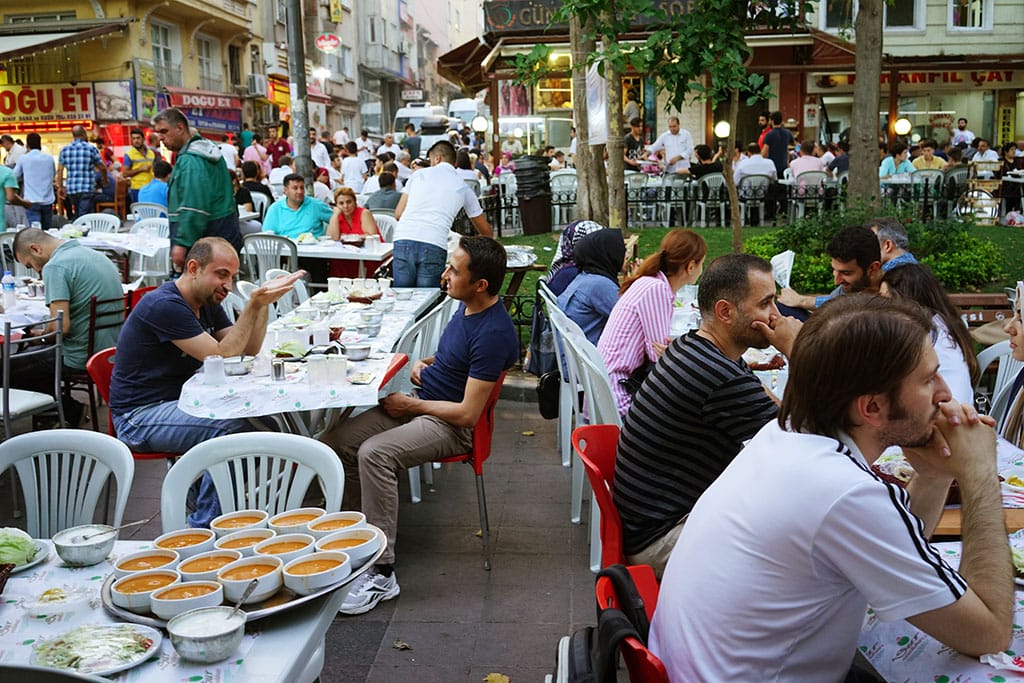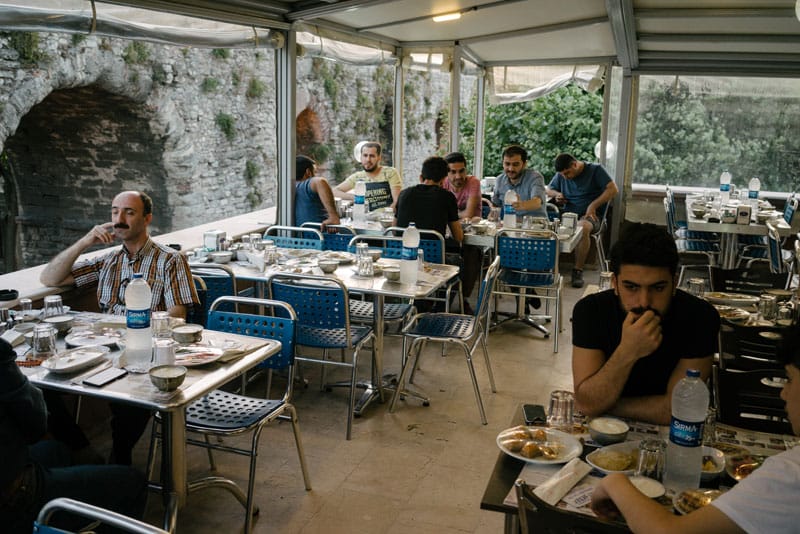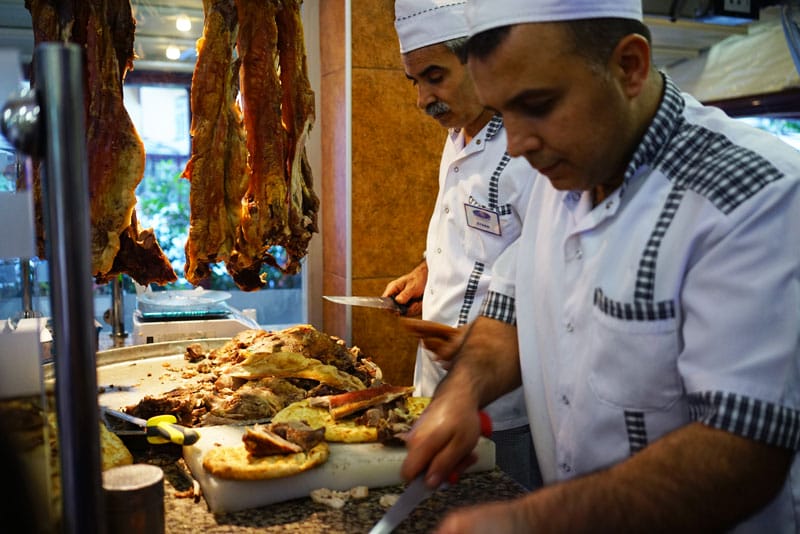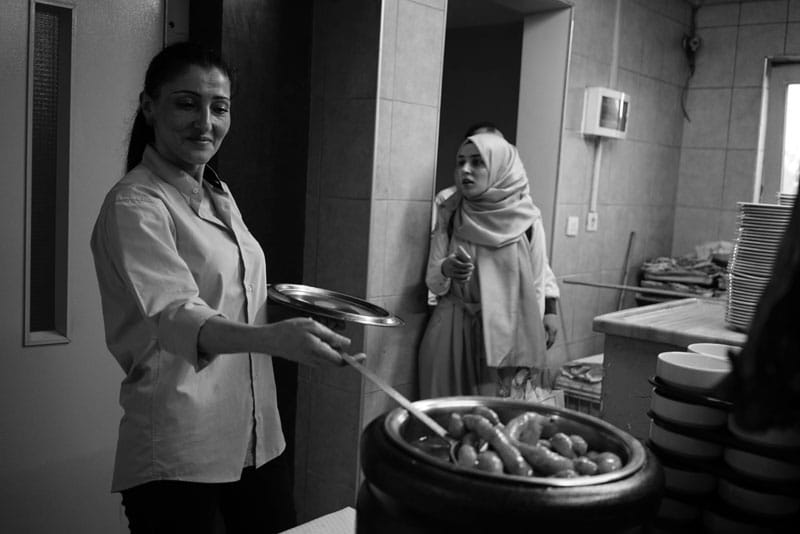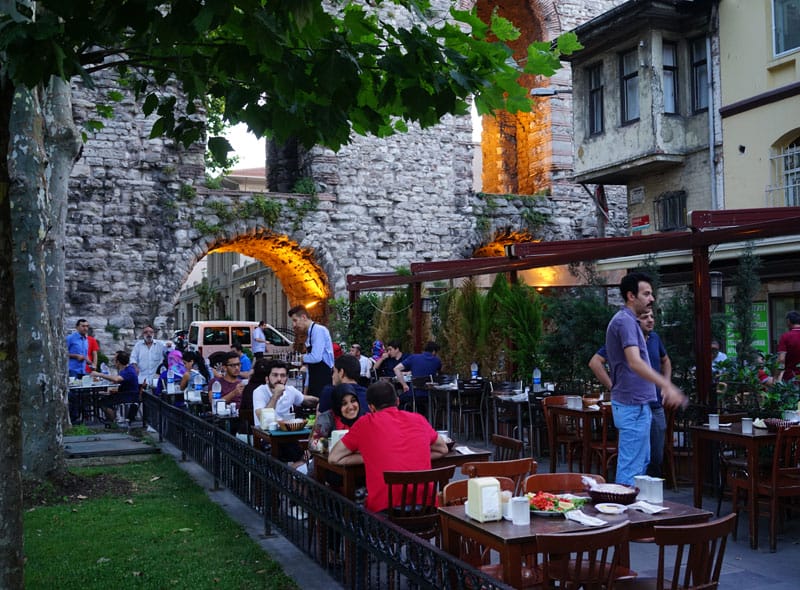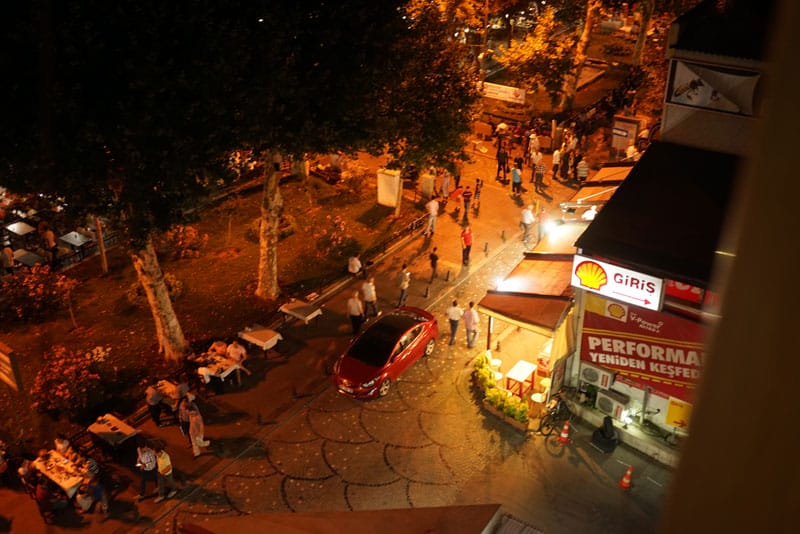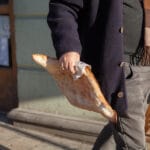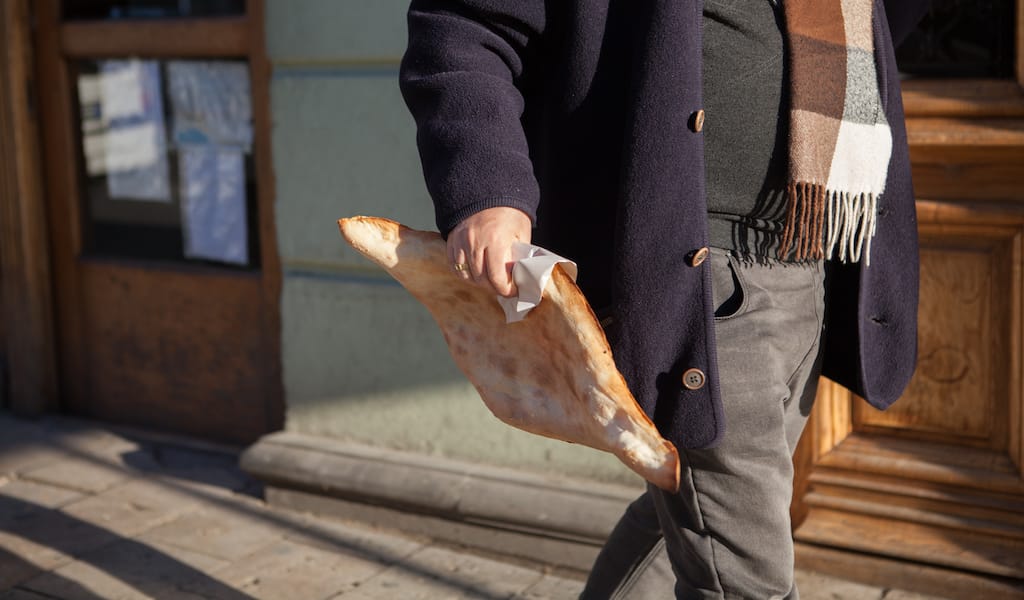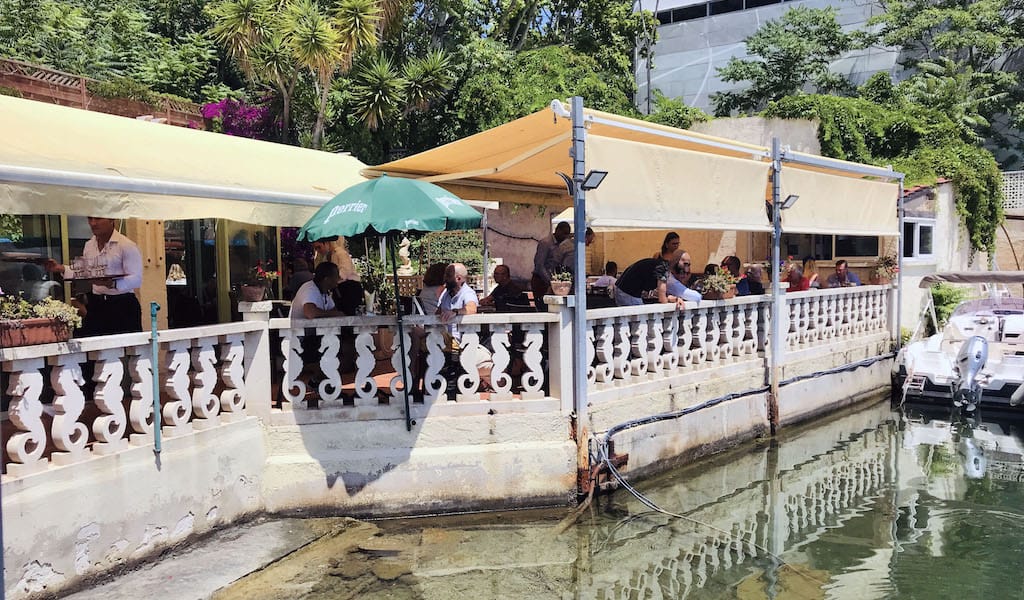Ramadan fasters in Istanbul may not love the endless daylight hours in summer nor the susuzluk (no water), but when the reward is a leisurely iftar under the trees on Kadınlar Pazarı, the pedestrianized market known as Little Siirt (named after the southeastern Turkish city where many of the local shop and restaurant owners hail from), it must surely seem worth it.
A February iftar would not be quite the same, at least not in Turkey. As we walked through the twilight to Siirt Şeref Büryan Kebap Salonu at the end of the square last Saturday, hundreds of fasters waited in front of cling-filmed plates of iceberg lettuce and ciǧ köfte (little croquettes traditionally made out of a mash of bulgur, spices and raw meat) for the Ramadan cannon to signal “breakfast” time. Some fed their children while they waited, while others kept their hands and minds busy with cell phones as a soft breeze wafted grill smoke through the arches of the Byzantine aqueduct of Valens that dominates the square.
Şeref Büryan feeds 450 customers every night during Ramadan, the month-long period of daily fasting which ends on Tuesday. Their famed büryan lamb kebab cooks for two hours on hooks lowered into a sealed pit, with only salt to draw out the flavors. Bones are removed from the meat and cooked separately to impart flavor to the meat. The result is succulent, and it is served on a round of lavaş; lamb on toast, Siirt-style. Perde pilav, a traditional wedding dish of chicken in a rice crust cooked in a tin pot, is also served, as well as a flat, Siirt version of içli köfte (cooked ground meat stuffed inside a bulgur shell). The owners, brothers Beşir and Levent, have another branch in Siirt and have served Martha Stewart, among others, their büryan.
At ten to nine, the mahyalar (letters in lights) strung up between the Suleymaniye Mosque minarets lit up, reminding us not to forget those who had nothing (Yoksulu unutma), the message underlined by the fireworks that erupted behind it. In case we had missed the cannon shot, the defiantly cheerful waiters announced iftar to each table. Our neighbors muttered a prayer as they ate a date – the traditional opening bite of an iftar meal – and drank a large glass of water, the first thing to pass their lips for 16 hours. Seagulls wheeled above our heads, their undercarriages lit a soft yellow by the city.
The waiters were still good-humored as we left the restaurant despite having fasted an extra couple of hours while serving us. We emerged on the square as the mosque next door filled up for evening prayers. On our way home, we had a sighting of Kınalı, a sheep with henna-colored wool who has become a local Istanbul legend for the strolls she takes around town with her eccentric owner, who bought her from a butcher several years ago. It was the perfect (if slightly bizarre) ending to a mutton-filled evening.
Editor’s note: As the holy month of Ramadan begins, we wanted to share this 2016 story about one of our favorite iftars in Istanbul.
Malika BrowneMonica Fritz
Published on June 07, 2018
Related stories
February 20, 2024
TbilisiTbilisi is a city of bread. This staple food has a permanent residency on every kitchen sideboard and a space on every modern table, and has been consumed in Georgia since the beginning of the 6th millennium BC. The demand for fresh bread has produced bakeries throughout the city; multiple in each area and sometimes…
July 16, 2020
MarseillePerched at Marseille’s northern border along the Mediterranean, the port of L’Estaque once teemed with fishermen. Starting in the 17th century, local pêcheurs would catch sardines, tuna, mackerel and poissons de roches (the rockfish that are essential to the city’s iconic bouillabaisse.) In the 1960s, these independent fishermen were swallowed up by the increase in…
December 5, 2018
IstanbulIn happier times in Aleppo, a sweet drink called sharab al-louz – made with almond extract, milk and sugar – was a staple at celebratory events such as engagement parties and weddings, Ammar Rida recalls. That was before he had to leave his job as a lecturer at the University of Aleppo and flee Syria…







































